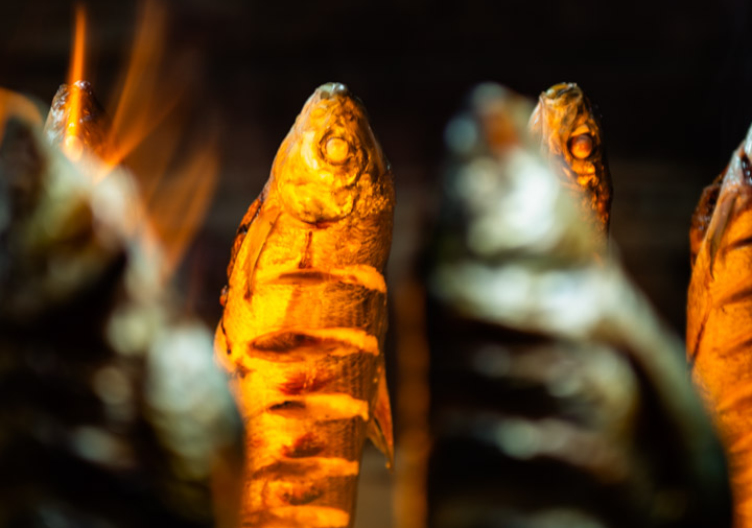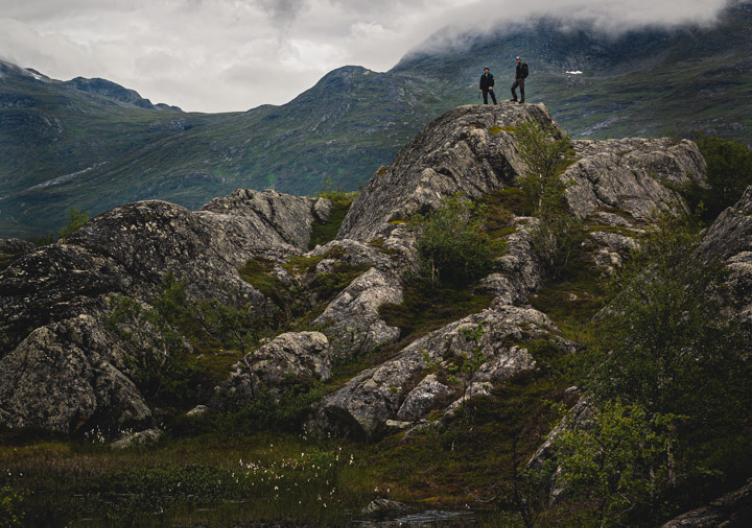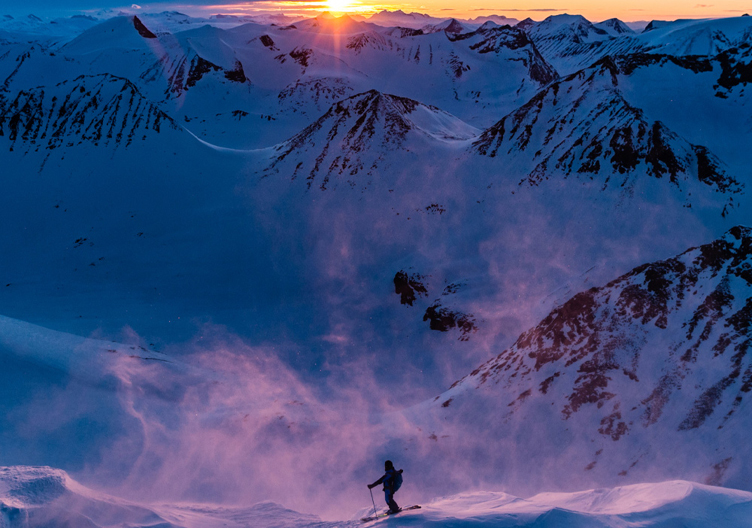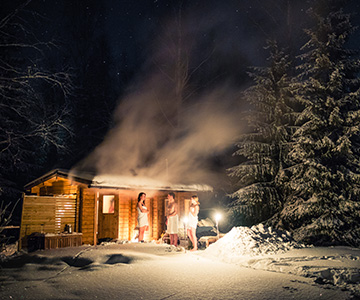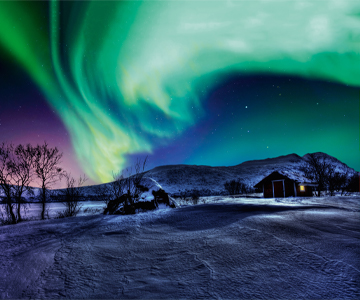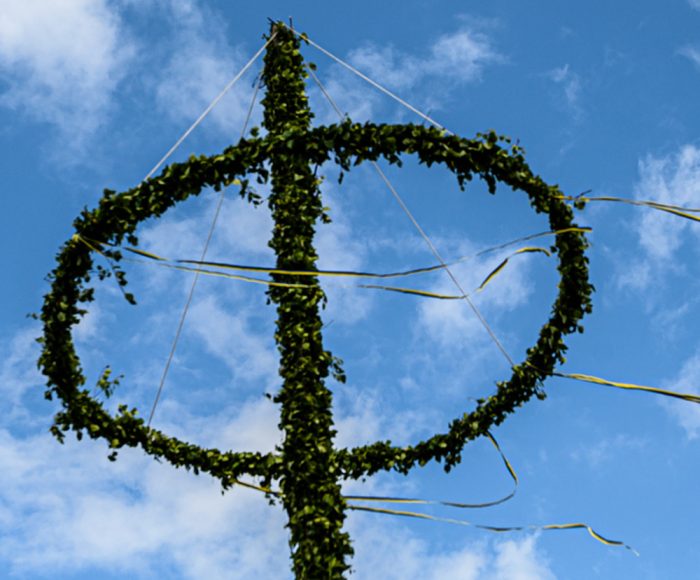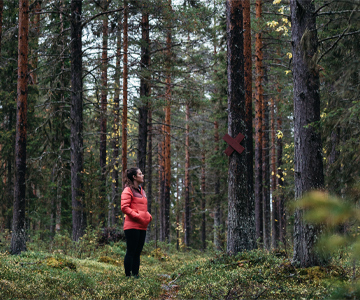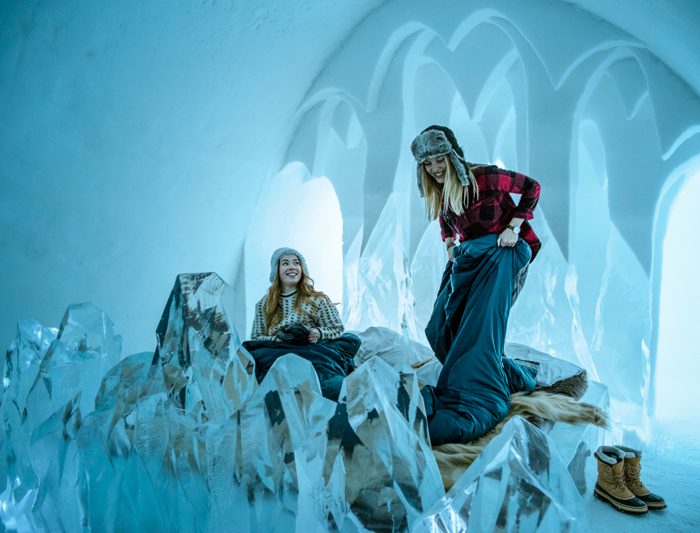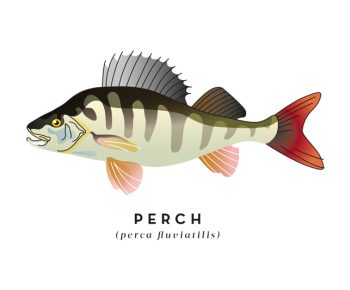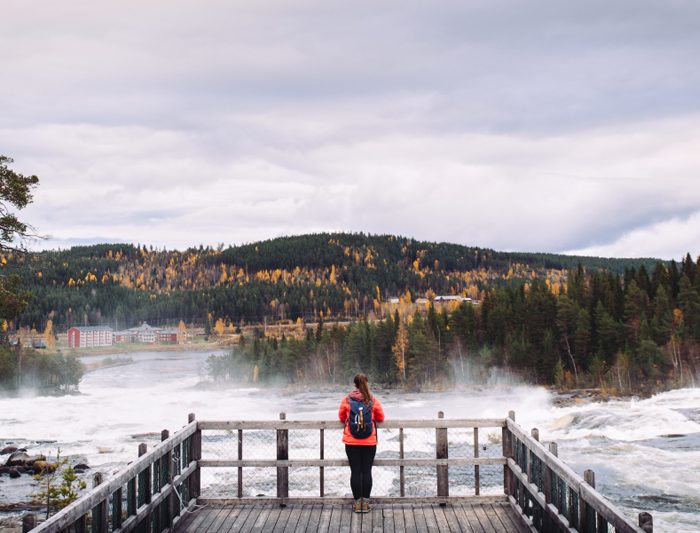On a July afternoon, your train rolls in to Älvsbyn. This area is known for its entrepreneurial history. Some of Norrbotten’s strongest brands are found here. It’s also home to Storforsen rapids, one of Swedish Lapland’s most visited attractions. You have 24 hours at your disposal to do something exciting. So: what to do in Älvsbyn, now that you’re here?
Afternoon: You wash down the travel dust at Hotel Villa Sparta. Well, to make a long story short: The hotel was called Villa Sparta in the beginning and has always been called Sparta by the locals, but a new owner renamed the hotel Polar Hotel, perhaps as a nod to the famous bakery in town. But now it’s back to Villa Sparta. You check in, but before taking care of that travel dust on the outdoor terrace, you decide to stretch your legs and walk through town.
The pedestrian or main street features all the shops you’d expect in a small town like this. You can see several pizza places, so you know you won’t starve. But you also notice Centrum konditori – a pastry shop – and Osushi next to the hardware store Gårdings – a place that seems to offer more than your usual hardware store would. Then there’s Handplockat with most things a garden or a house need: furnishings, design, vintage, and confectionery. The last treat is something you take back with you to the hotel.
Evening: You have dinner at Sparta. A classic toast Skagen for starter and sirloin steak for main course. You don’t like to complicate things, and neither does the kitchen. It’s simple, classic and it’s good. You sit down and make plans for the following day. You’ll be donning your walking shoes again. Unless you decide on staying an extra day to be able to go on an excursion to Norrbotten’s perhaps most visited nature reserve: Storforsen.
Optional day: There is a bus to Storforsen in Vidsel that departs from Resecentrum in Älvsbyn. It makes it easy. Along the Pite River, which is one of Sweden’s four untouched national rivers, featuring one of Sweden’s finest salmon pools at Fällfors downstream from Vidsel. Storforsen rapids are Europe’s largest unregulated rapids with a total drop of 82 metres over five kilometres.
As a memory of the log driving days along the Pite River, an exciting area called The Dead Fall has been created and it’s excellent for sunbathers. The area around the rapids themselves is also a nature reserve and there are lots of beautiful trails to explore, including a well-developed area that can be navigated by those with reduced mobility. If you’re staying at the hotel, you can rent a mountain bike and take on the bike-trail system: nearly 10 kilometres of trails that start from Hotel Storforsen.
Before the bus takes you back to Älvsbyn you take a seat on the hotel’s outdoor terrace and savour a cold one, accompanied by the roar from the impressive rapids.
About Älvsbyn
Softly nestled between forested mountains next to the river, Älvsbyn is, not without reason, called Norrbotten’s gem; this originated in an analogy between Älvsbyn’s top-down view and a gemstone, with the glittering azure strip on one edge encased by high and steep mountains. It’s also home to Storforsen. With an average flow of 250 m3/s, the rapids are one of the biggest in Europe. The rapids stretch over a distance of 5 km in which it drops 82 meters 60 of which are a single waterfall.
Have a chat with the local tourist information for more insights: visitalvsbyn.se
Curious about living in Älvsbyn?
Morning: You wake up early to the warm light of summer. You tie your shoes and bring an extra sweater, just in case, before you head out on a morning walk. There is a trail called Hälsans Stig (the Health Trail) in Älvsbyn, and you choose it this morning just to wake up your legs. You’re about to embark on much bigger hardships, so you’re happy this is quite flat and easy going. Breakfast out on the hotel terrace is a tasty reward.
Daytime: There’s a lot to do during a day in Älvsbyn, even if you choose not to aim for the famous Storforsen rapids. If you cross to the other side of the Pite River, you get an exciting view from the climbing crag Hundberget, part of Top of Älvsbyn and the path through Rackberget nature reserve. Where the path up on Hundberget begins, there’s a sign informing you that this was one of the locations in a famous Swedish film called Jägarna (The Hunters). Älsbyn is a popular ‘location’ for the Swedish film industry. In town there’s the church town by the church. In Älvsbyn, just like in other towns, church visits were mandatory and farmers from villages in the surrounding area built overnight cottages near the church. Nowadays these 32 cottages form a cultural environment of national interest. On the other side of the road there’s also the Bakery Museum, which tells the story of how the bread called Tioöreskaka (one-penny-bread) in the 1920s became the classic Polarkaka of today. A century-old bakery tradition.
For those more interested in motoring, or just interested in history lightly scented with motor oil, the Petrol Museum in Älsvbyn is worth every detour. It wasn’t all better in the old days, but the petrol stations were nicer. There’s memorabilia here from classic brands such as Esso, Gulf, Caltex, BP and Shell. For lunch, you choose between the well-known Älvåkragrillen, pizza, sushi or traditional fare in town, but opt for Sommarcaféet in Lomtjärnsparken, near the camping site. It’s gloriously warm. You contemplate a swim, perhaps at Selholmen, or possibly a visit to the newly built public bath (to be completed in 2022) before the evening train returns and it’s time to continue on your travels.
Packing up: You find a seat on the train and know you could have stayed longer. That’s what it’s always like. Richard Öhman’s Udda Äventyr has offered amazing horseback riding in Älvsbyn for decades. A new summer adventure that sounds pretty unique is cattle driving: western riding for real. If you haven’t chosen to stay at a ranch with western horses, Skatauddens Lantgård offers farm stays – Bo på Lantgård. It’s a working farm that offers accommodation as well as a farm shop.



